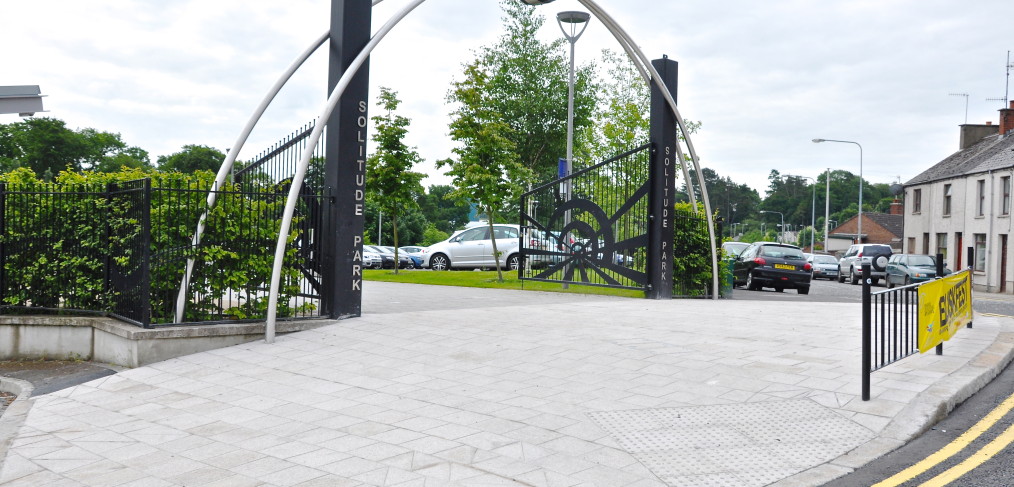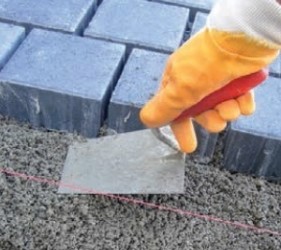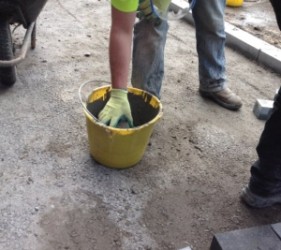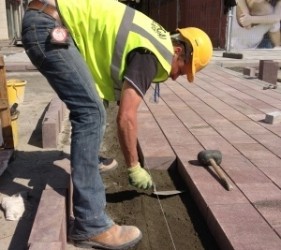
Smet features in Northern Builder Paving Special
Smet features in Northern Builder Magazine Paving & Resins Special
Smet Building Products Ltd features heavily in the latest edition illustrating their innovative strategies in the arena of Paving. In this Paving & Resins Special, Northern Builder provides the ultimate guide to the Paving sector, with a focus on the latest innovative products on the market.
To read these articles online Northern Builder Magazine Vol: 24 No 3 – 2013 follow this link
Smet Paving & Resin Special click – the following Smet related articles and advertisements link to read those featured in this highly innovative edition:
Paving & Resins Special
NORTHERN BUILDER PROVIDES THE ULTIMATE GUIDE TO THE PAVING & RESINS SECTOR, WITH A FOCUS ON THE LATEST INNOVATIVE PRODUCTS ON THE MARKET…
Bonded or unbonded?
The use of segmental units (setts, pavers and flags) in paved roads, paths and squares is one of the oldest forms of construction. Today, this method is employed for both vehicular and pedestrian areas in public realms and hard landscaping in private gardens.
One of two general construction types:
– bonded construction or unbonded construction – is adopted depending on the type of paving units and its use (traffic loads, road sweepers). Bonded construction incorporates binders in the road base, bedding and jointing materials; however unbonded construction employs binder-free granular materials.
A combination of bonded and unbonded construction is frequently adopted for privately used pavement areas (which are generally subject to low traffic loads). In such cases, the road base/sub base and bedding course are unbonded and only the paving grout is bonded. This solution is preferred by private clients as the resulting pavement is largely maintenance-free (no regular weeding necessary), and no sand or stones are trampled into the house. Yet, due to movement of unbonded paving, this construction necessitates the use of flexible formulated reaction resin-bound grouts. With bonded constructions, the setts, pavers or flags are rigidly installed in a hydraulically setting mortar bed (bedding mortar) on a bonded road base. Both the bedding course and the hydraulically bound road base/sub-base are made of pervious mortars which, once set, allow adequate drainage. The same applies to bituminous-bound porous asphalt courses. Paving grouts, on the other hand, take the form of an impervious mortar matrix. This ensures that water, as far as possible, runs off the surface rather than infiltrating into the paved construction. The paving units should be laid with adequate, uniform joint widths. Some concrete pavers are provided with special spacers to facilitate laying with a regular joint pattern. The joints are finished using a bonded paving grout. The combination of bound base and bound grout produces an overall construction, capable of withstanding exceptionally high loads. Depending on the duty, bonded constructions are able to accommodate a limited amount of deformation. Expansion is, however, subject to very narrow limits due to the extremely low elongation at fracture (between 0.1 and 0.2 mm/m) of paving grouts and bedding mortars.
Cracking is inevitable given the fluctuating loads (traffic, temperature action), heterogeneous pavement composition, varying shrinkage behaviour and consequent internal stresses within the construction. Yet, these in themselves do not result in damage to the pavement, nor do they constitute a defect.
Unbonded constructions involve the laying of segmental units in a loose chippings bed with subsequent vibration. In the past, any joints within the pavement were filled with sand or finely graded quality chippings. These loose jointing fillings have, however, proved vulnerable to modern-day suction road sweepers and the resulting material loss allows displacement of paving units and rutting upon exposure to sufficiently high traffic loads. A satisfactory solution to this problem may, under certain circumstances, be offered by the use of reaction resin paving grouts. As the situation in many towns and cities shows, rising traffic volumes and higher loads (for example through heavy-goods vehicles and buses) now pose a problem for traditional unbound segmental constructions. The use of suction road sweepers, which pick up the loose jointing material (sand, chippings, etc) and thereby empty the joints, encourages water infiltration into the pavement, causing long-term damage to the overall construction. This may manifest itself through rutting, settlement and the loosening, tipping or displacement of paving units.
To avert such failures, pavements subject to high traffic loads should be bedded on a bound road base. Likewise, a high-strength, hydraulically setting paving grout or reaction resin mortar should be used for jointing. A wide range of segmental paving materials, including concrete, natural stone and clay are now used for public and private vehicular areas. The paving units are available in diversity of formats, sizes and thicknesses. Recently, there has been a trend towards large-format units with substantial thicknesses (approx. 800mm – 1,600mm). But regardless of pavement type (i.e. for bituminous, concrete and segmental pavements), roads and other hard-landscaped areas require channels, formed with concrete or stone units, to carry rainwater run-off to drainage gullies. From a technical viewpoint, channels take the form of slender; in some cases even filigree, linear constructions. The narrower they are, the more vulnerable they become to shear movement and surface loads. To maximise durability, drainage channels require a stable base (including, where necessary, a reinforced, in-situ concrete foundation), wet-on-wet laying of the paving units with appropriate bonding layers, and the complete filling of joints between the units with a suitable paving grout.
“Smet recently secured the Streetscape range of Germany’s leading manufacturer Sopro, which completes the portfolio of Smet Streetscape products”.
Streetscape range from SMET
Smet Building Products Ltd is dedicated to delivering the leading names in building products direct from mainland Europe to Ireland and the UK. The company’s strength is delivering innovative high quality products supported by exceptional customer service. Smet recently secured the Streetscape range of Germany’s leading manufacturer Sopro, which completes the portfolio of Smet Streetscape products to the company’s existing BS 7533 compliant suite of products. Joris Smet, Managing Director, said, “At SMET, we are site focused, providing you with industry specialists who will be with you on site to build your test panel, provide training and support as well as demonstrate the Streetscape materials. We don’t believe in ‘sell and forget’ – our policy is to continue to monitor the scheme to ensure a first class finish.”
Download the new Smet Streetscape brochure now at www.smet.ie or www.smet.buildingproducts.com
Smet Building Products Ltd | 28 Castleowen | Newry | BT34 1GF | T: 028 3082 5970 | F: 028 3025 2777 | www.smetbuildingproducts.com or www.smetbuildingproducts.com



